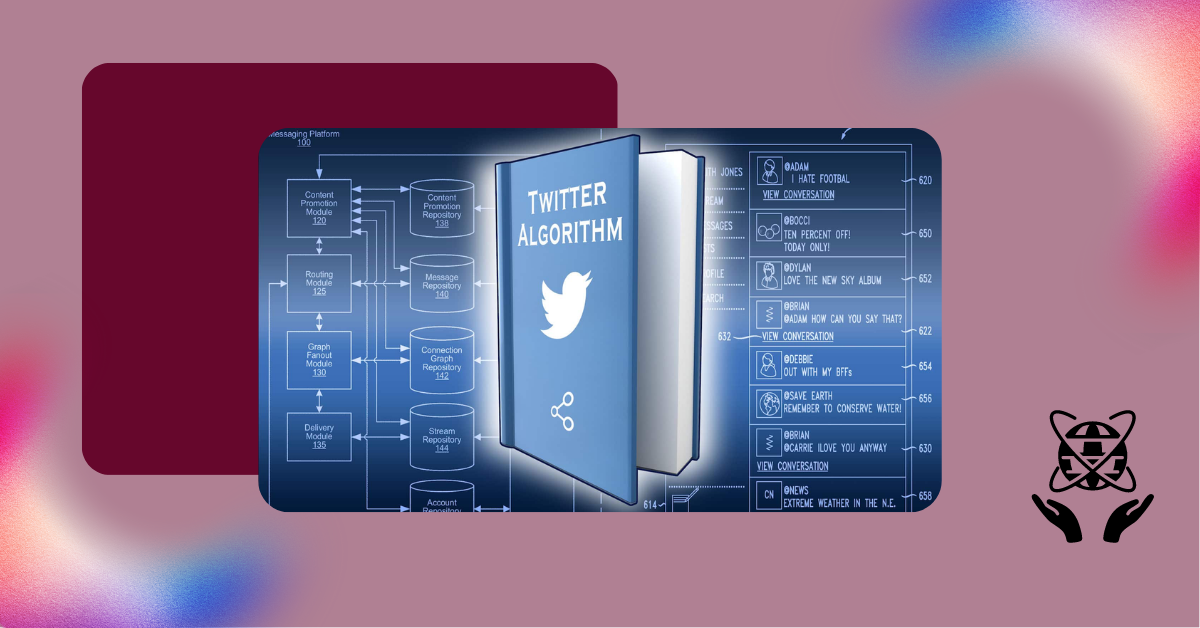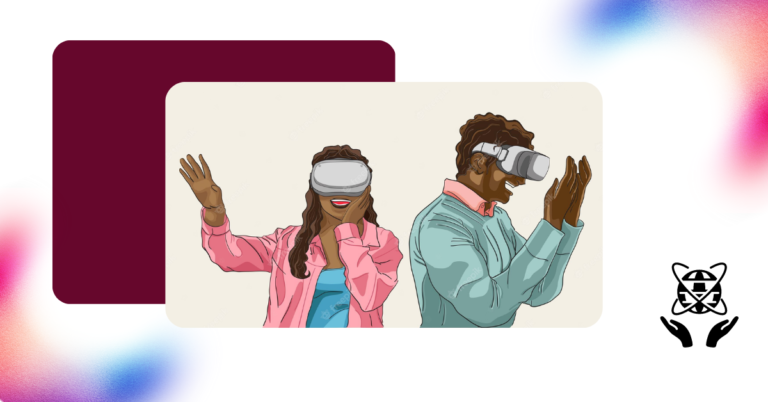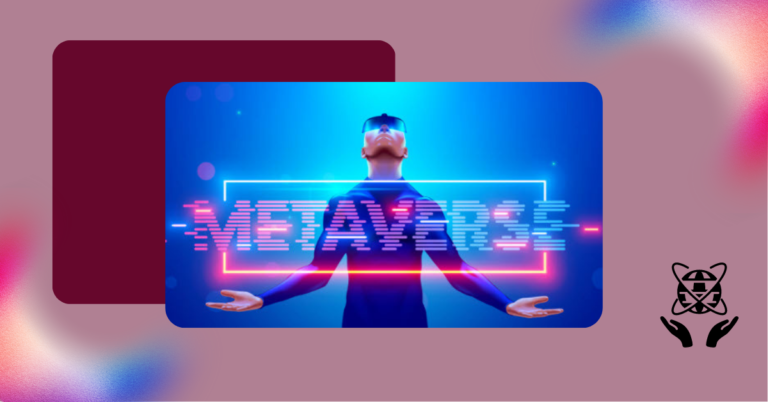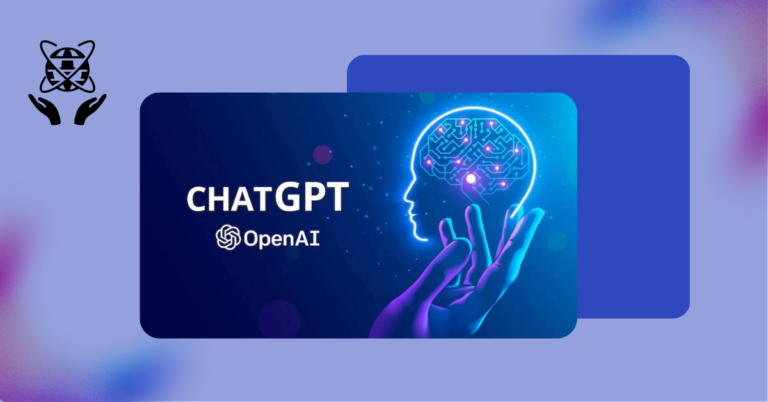Table of Contents
ToggleWhy Twitter’s Recommendation Algorithm Reveal Is Great For Your Brand
Picture this: you’re scrolling through your Twitter feed, bombarded by a never-ending stream of tweets from users you follow and those you don’t. With so much content vying for your attention, how does Twitter decide what to show you?Twitter has just made a move that could change the game for brands advertising on the platform after announcing today it had released ‘some of its source code,’ on GitHub, including its highly coveted recommendation algorithm. This is a bold move for Twitter, as it allows other developers and companies to gain insight into how the algorithm works and improve upon it.
What is the Recommendation Algorighthm?
So, what exactly is Twitter’s recommendation algorithm, and how does it work? In simple terms, the algorithm is a complex system that analyzes millions of Tweets daily and determines which are most relevant and engaging for each user. Twitter users post around 500 million Tweets daily, so this is no small feat.
How does Twitter’s recommendation algorithm work? Well, according to an article from Verge, it’s a three-stage process. The first stage is candidate sourcing, where the algorithm looks at recent Tweets from people the user follows and people they don’t follow to find the best 1500 Tweets for that user. The second stage is ranking, where the algorithm uses a machine learning model to rank each Tweet based on thousands of features and predict the likelihood of positive engagement (likes, retweets, replies). Finally, the third stage applies heuristics, filters, and product features to create a balanced and diverse feed for the user.
At B3, we utilized artificial intelligence technology via social and analytics tools years before Chat GPT went mainstream. Now that tools like Bard, Chat GPT, and others are taking center stage; we believe there are several brand benefits from the release of Twitter’s source code. Not only will it help brands better understand the underlying principles of the algorithm, allowing them to make more informed decisions about how to use it to their advantage. But it will enable AI tools to analyze data from the algorithm to identify patterns that could be used to improve the effectiveness of their campaigns.
What This Means For Brands
I. Prioritizing relevance and engagement
- According to BGR, Twitter’s algorithm prioritizes relevance and engagement for each user, which means that brands should focus on creating content that is both relevant to their target audience and engaging enough to elicit positive engagement from users. To achieve this, brands can use relevant hashtags, target specific demographics and interests, and create visually appealing content that stands out in users’ feeds.
II. Insights into the algorithm
The release of Twitter’s recommendation algorithm’s source code is a significant development for brands advertising on the platform, as it allows them to gain insight into how the algorithm works and use that knowledge to create more relevant and engaging content that can be recommended to users.This could lead to increased engagement, more followers, and higher brand awareness on the platform. Developers have already devoured the source code to share with brands what matter’s most.
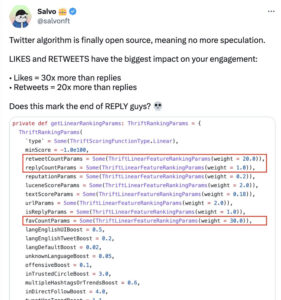
III. AI-powered tools to improve social campaigns
- The release of the algorithm’s source code could also lead to the development of more advanced AI tools in social media, like Dash Hudson, that could help brands create more engaging and relevant social content and campaigns. For example, AI-powered tools could be used to analyze data from the algorithm to identify trends and patterns that could be used to create more effective ad or brand messaging campaigns. Many social tools can already identify the types of content that are most likely to be engaged with, the best times to post, and the most effective ways to engage with users.
IV. Driving innovation in AI
- Finally, the release of Twitter’s algorithm will help drive innovation in AI more broadly by creating an open platform for experimentation and innovation.This could lead to the development of new AI tools and techniques that can be applied across a range of industries and applications, specifically for marketing, advertising, and social media.
By understanding how the algorithm works and leveraging the insights gained, coupled with the power of AI, brands can create more engaging and relevant content that is more likely to be recommended to users, leading to increased engagement and brand awareness. It’s an exciting development for the world of social media intelligence, and we can’t wait to see how brands will take advantage of it in the future!

